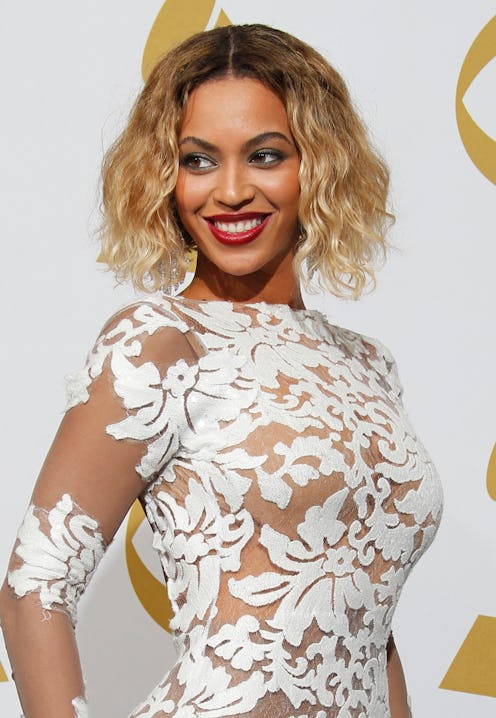Getty Images/ Aaron J. Thornton / Contributor
There are hairstyles that come and go (like the mullet). But there’s one look that’s timeless: the bob. From its rebellious beginnings to its transformation as a universally flattering cut, this is the 100-year timeline of the bob haircut.
Culture Club/Hulton Archive/Getty Images
1920s
The '20s was the birth of the bob and a time of burgeoning female independence. “Most bobs hovered around the earlobe length with a center or deep off-center part, and hair was finger-curled or combed straight,” says Trey Gillen, stylist and creative director at SACHAJUAN.
UniversalImagesGroup/Universal Images Group/Getty Images
1930s
Gillen says the bob of the ‘30s was about sponge-roller set curls and a mid-nape length, à la Bette Davis. “These were very shiny compared to the ‘20s, [and used] more hair gel-type products to create the waves.”
Universal History Archive/Universal Images Group/Getty Images
1940s
The bobs of the ‘40s were less styled than the previous decade. “Women embraced a more natural femininity,” Gillen says of the look. The bobs were shoulder-length with “lazy” waves framing the face and very deep side parts. Think Katharine Hepburn.
Donaldson Collection/Moviepix/Getty Images
1950s
The 1950s saw the creation of the bombshell, and the bob was the piece de resistance of the look. “Women were exploring their sexuality and sensuality, showing more skin,” Gillen says. “Hair was shortened to the jawline and much more curly — full of volume and flirty.”
Getty Images/ Silver Screen Collection / Contributor
1960s
“The bob symbolized a further phase in female emancipation as young women began to distance themselves from the austere past of their parents,” Gillen says of the ‘60s. Visually, this meant Vidal Sassoon's famously angular, unfussy bobs that were easy to style at home.
Roberta Bayley/Redferns/Getty Images
1970s
In the ‘70s, there were two different variations: the pageboy bob, which Gillen says was a round cut that covered the ears and hung at the lower nape of the neck; and the disco bob. Of the latter, he notes the look was blunt and “disheveled like a deconstructed French bob.”
Bob Riha Jr/Archive Photos/Getty Images
1980s
When the ‘80s hit, there was a growth in freedom of self-expression — which also brought forth many variations of the bob, according to Gillen. The common factors of them all? Perms and volume.
Getty Images/ Ron Galella / Contributor
1990s
Nostalgia’s favorite decade featured “the rock and roll bob,” says Gillen. “[This involved] a blunt parameter around the shoulders and often a very strong blunt bang to match,” he tells Bustle. The cut was styled messy and tousled, which signified carefree grunge vibes.
KMazur/WireImage/Getty Images
2000s
Then came the early aughts take on the bob. “Ease, effortlessness, and lots of movement,” were the crux of its 2000s-era style, according to Gillen. This took form in a very round cut which was lifted at the roots and tapered around the parameter.
Getty Images/ Jon Kopaloff / Contributor
2010s
It continued past the decade, too. “The bob is the one hairstyle that remained popular throughout the 2010s,” Gillen says. The 2010s however saw endless variations of the cut — featuring everything from sleek to curly and blunt to layered.
Pietro D'Aprano/Getty Images Entertainment/Getty Images
2020s
Enter: the lob. “The lob was dominating the beginning of this decade, but the classic bob is definitely on the upswing,” Gillen says. The contemporary cut can be interpreted in countless ways — whatever you go with, the look will never go out of style.
